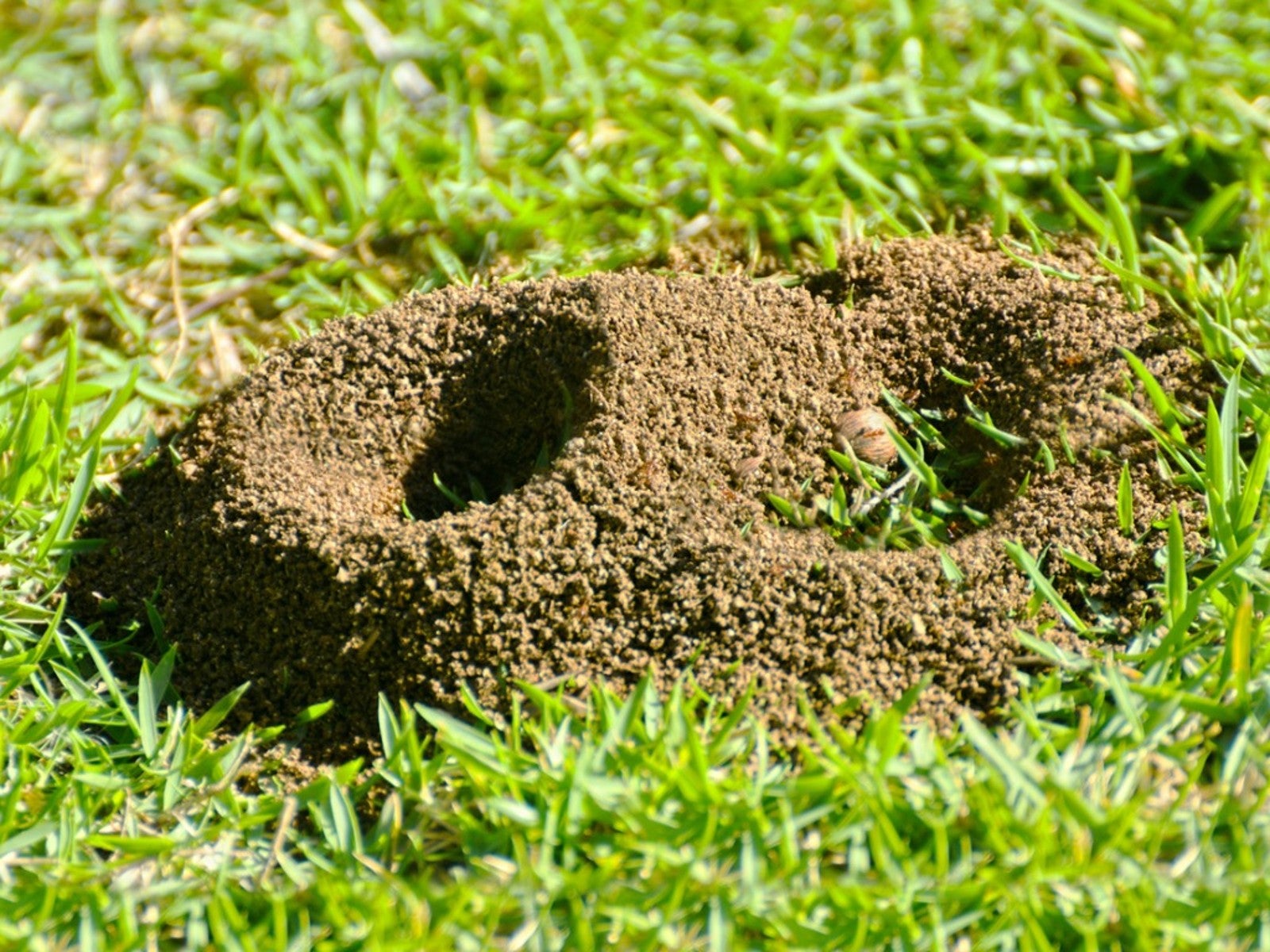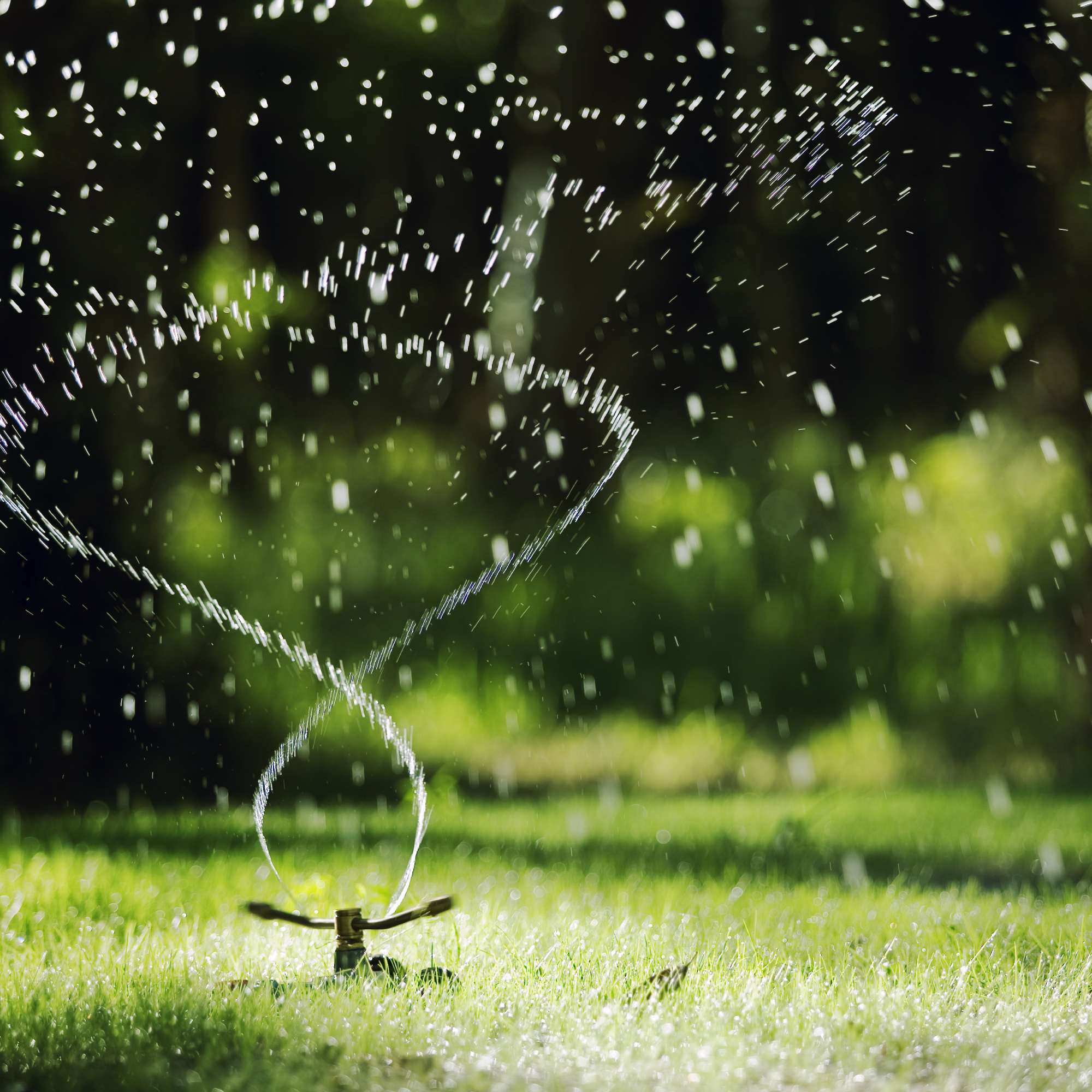Ant Hills In Grass: How To Control Ants In Lawns


Ants are not generally considered dangerous pests, but they can pose significant health and cosmetic damage to turf grass. When ant hills cause root damage to grass and create unsightly mounds, they can become problematic.
Ants create numerous generations per year and their numbers in one colony can be in the hundreds or even thousands. They commonly nest underground in intricate labyrinths which they build in the root systems of grass. These nests are where they feed their young and protect the queen.
Ants build an entrance to their nests by creating a hilled mound of dirt. These hills in a turf lawn can pose a hazard to foot travelers and mower blades, and may interfere with lawn-related sports like golf. Some gardeners wish to eradicate the insects, although this isn’t strictly necessary.
Are Ants in Your Lawn Always Bad?
Is an ant infestation in yard situations a turf problem? Discovering a nest in the lawn often sends home gardeners scurrying for the nearest ant killer. But actually, ants do little damage to grass, preferring to dine on a host of other things. In fact, ants can be beneficial. They cart away the larvae of numerous damaging turf pests.
Field ants make large mounds up to 4 feet (1.22 m) wide and 2 feet (0.61 m) tall. They can be unsightly, create trip hazards and can interfere with certain maintenance tasks. However, if a gardener thinks ants are the cause of poor turf grass performance, this is not the case.
A healthy colony of ants can actually reduce turf pests, a form of natural control for the real perpetrators of poor lawn health. Many ant species will “farm” pests such as aphids and mealybugs in order to maintain a source of honeydew for their own sustenance.
When Are Ants a Problem in Grass?
Outside the aesthetic issues, ants can certainly pose a problem to golf courses due to the typically low mowing height, as well as being unattractive in this generally pristine environment. Ant mounds also create uneven ground which can interrupt good golf putting.
Gardening tips, videos, info and more delivered right to your inbox!
Sign up for the Gardening Know How newsletter today and receive a free copy of our e-book "How to Grow Delicious Tomatoes".
During the mounding process, the excess soil may smother out small portions of turf grass. Under the surface, the ants’ tunneling will remove soil from grass roots, causing them to dry out and die. Ant tunnels can delve 4-5 feet (1.22-1.52 m) below the ground’s surface. This has the potential to destabilize the area in high colony concentrations. In addition, a few species of ants will render a painful bite if their nest is disturbed. But ants tend to nest where turf grass is sparse in a sunny location. In healthy lawns, they rarely colonize in thick grass.
Lawn Care and Ant Hills
The presence of hills is most noticeable from May to early September. During the month of June ants become their most active, and they seem to prefer sandy soil for easy tunneling.
One way to prevent ant hills is to keep the turf healthy. Mow your lawn to a height of 3 inches (7.6 cm). Water the grass deeply to foster a healthy root system. Fertilize the lawn annually as recommended for your type of turf.
A healthy yard is the best prevention for ant hills. A thick lawn is simply less attractive to nesting ant queens. Ants prefer dry, well-drained soil in an undisturbed low traffic area.
How to Control Ants in Lawns Naturally
If you are still wondering how to get rid of ants in yard situations, there are some natural solutions. Unfortunately, the only way to completely eradicate the nest is to kill the queen.
Killing ants in your lawn can be tricky business because children and pets often use lawn areas for play and for traversing the garden. And, since ants form social communities which can occupy an area just a few inches (8 cm) wide, up to a space that’s many feet across, ant populations and their associated problems will vary. If you have one of the huge ant groups entrenched in your lawn, you may want to take steps to eradicate them.
Raking
For low ant populations, raking the lawn should be a regular maintenance task. Simply raking out the hills will scatter the population and can reduce hardened mounds from occurring. This simple step is effective if it’s done on a weekly basis from fall to summer.
Borax
Borax is a naturally occurring mineral salt that is not harmful to the environment. Try using a borax and sugar water solution. Mix equal parts sugar and warm water with a couple teaspoons of Borax. Soak cotton balls in the mixture and lay them near the nest. Simply sprinkling borax powder around a mound, with or without added sugar, will dry the insects out from the inside once they have walked through, carried it into their nest and ingested it. Borax can also be toxic, so prevent children and pets from entering the area.
Dish Soap
You can try a 3 percent solution of dish soap with water as a spray for an infested area. Adding a spoonful of vegetable oil may make this more effective.
Diatomaceous Earth
Using a protective face mask, you can sprinkle diatomaceous earth in and around the mound area. Breathing dust from diatomaceous earth can be harmful.
Other Ant Treatments for Lawns
Chemical treatments are rarely recommended. In the case of stinging ants, the queen needs to be killed. Because she lives deep inside the earth, a topical application of chemical control will not work. There are some granular ant baits that, when scattered over the opening of the nest, will be picked up by workers and taken in to be shared with the rest of the colony. For liquid controls, open the top of the nest and pour the chemical straight into the nest. Products with deltamethrin, bifenthrin, and permethrin are effective if they are allowed to penetrate deeply into the soil.
Spot control is the best method for killing ants. They tend to concentrate in a small area and spot application isolates the chemical zone and minimizes damage to beneficial insects who also call the grass home.
Use either a liquid or granular form. Locate the nest and apply the chemical as indicated on the label. Granular forms require activation with water, so it is best to irrigate after applying the chemical. In all cases, wait until a treated area has dried before allowing children and pets into the toxic zone.
Ants can be a blessing and a curse, so consider the severity of the problem before resorting to chemical treatments. Their activity is also a natural pest control and can increase the tilth of soil, acting as wild aerators to loosen the dirt around roots and enhance growth.

Bonnie Grant is a professional landscaper with a Certification in Urban Gardening. She has been gardening and writing for 15 years. A former professional chef, she has a passion for edible landscaping.
-
 Here’s The Best Time To Water Grass For A Lush Lawn, According To Experts
Here’s The Best Time To Water Grass For A Lush Lawn, According To ExpertsUnderstanding the best time to water grass is important to the health of your lawn. Watering at the wrong time can lead to disease or heat-stressed grass.
-
 8 Vegetables You Can Still Plant In June For A Late Summer And Fall Harvest
8 Vegetables You Can Still Plant In June For A Late Summer And Fall HarvestPlanting time for high summer harvests has passed, but there are still many vegetables you can plant in your garden in June, for organic produce well into fall.